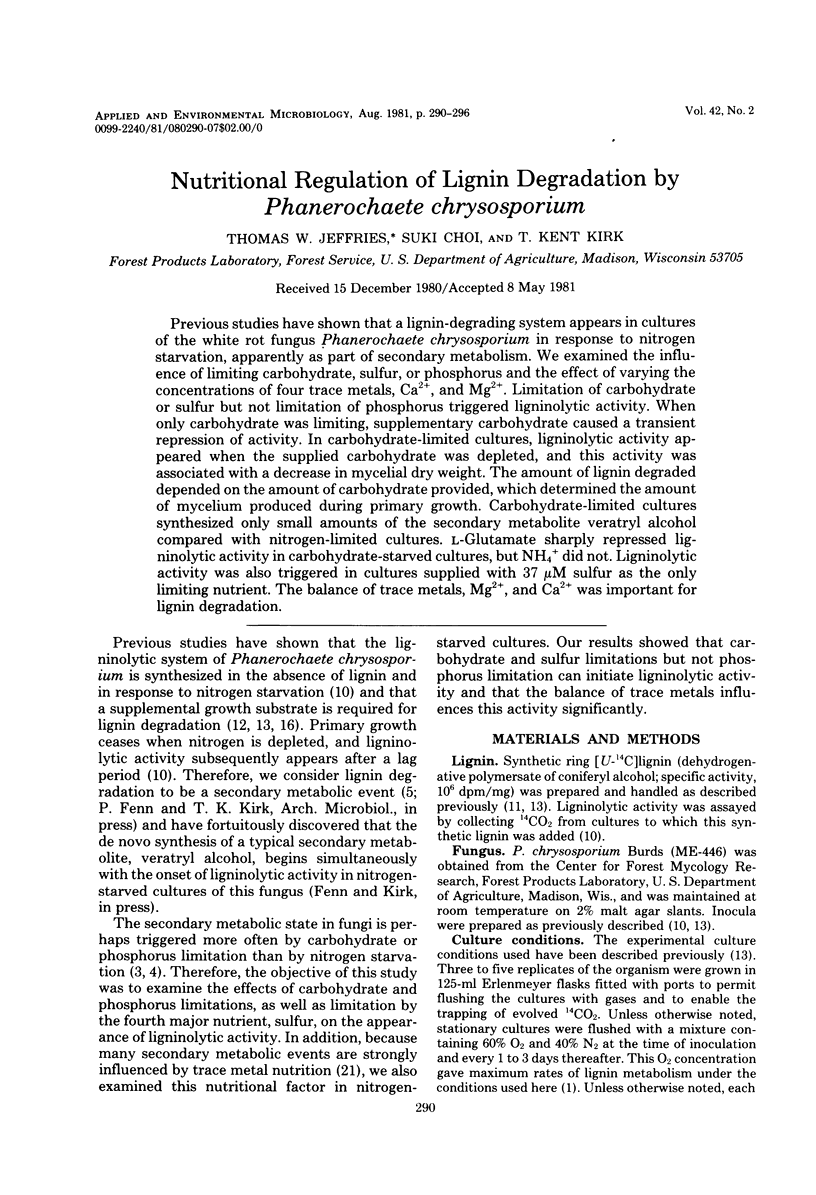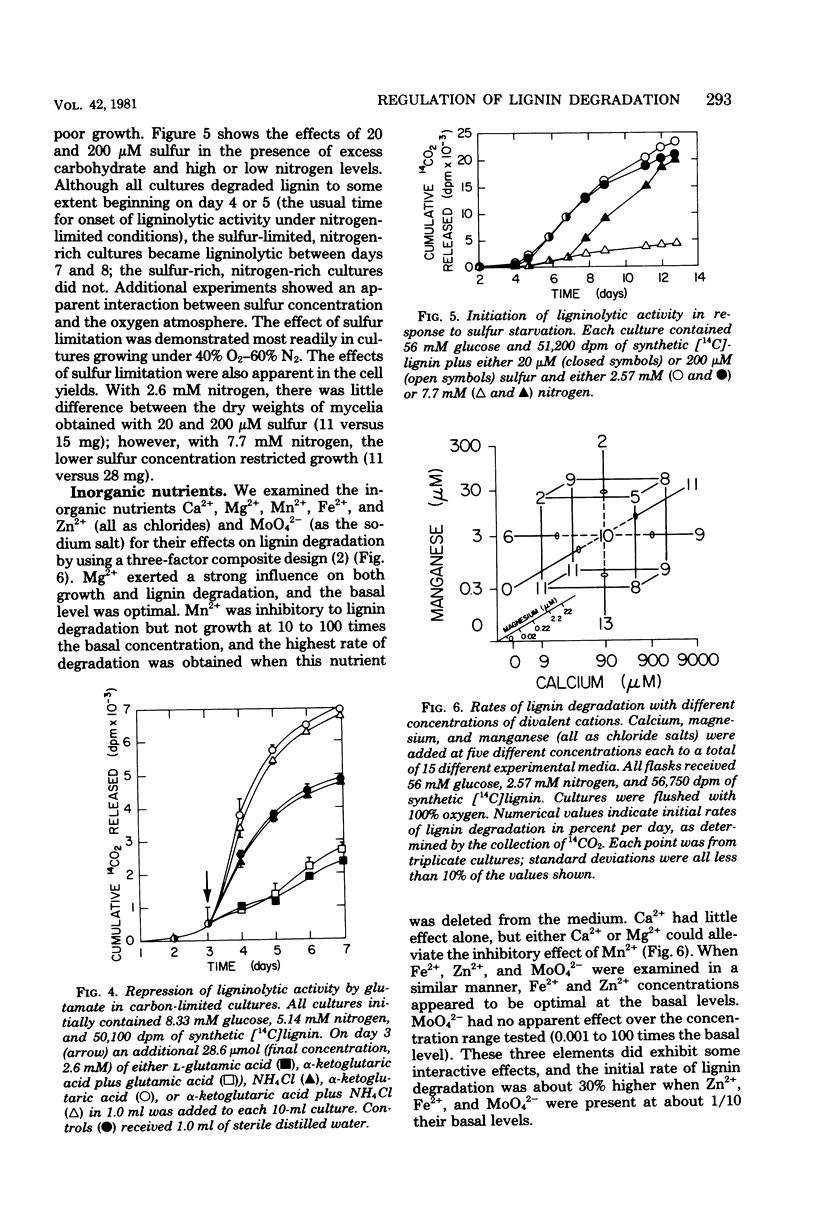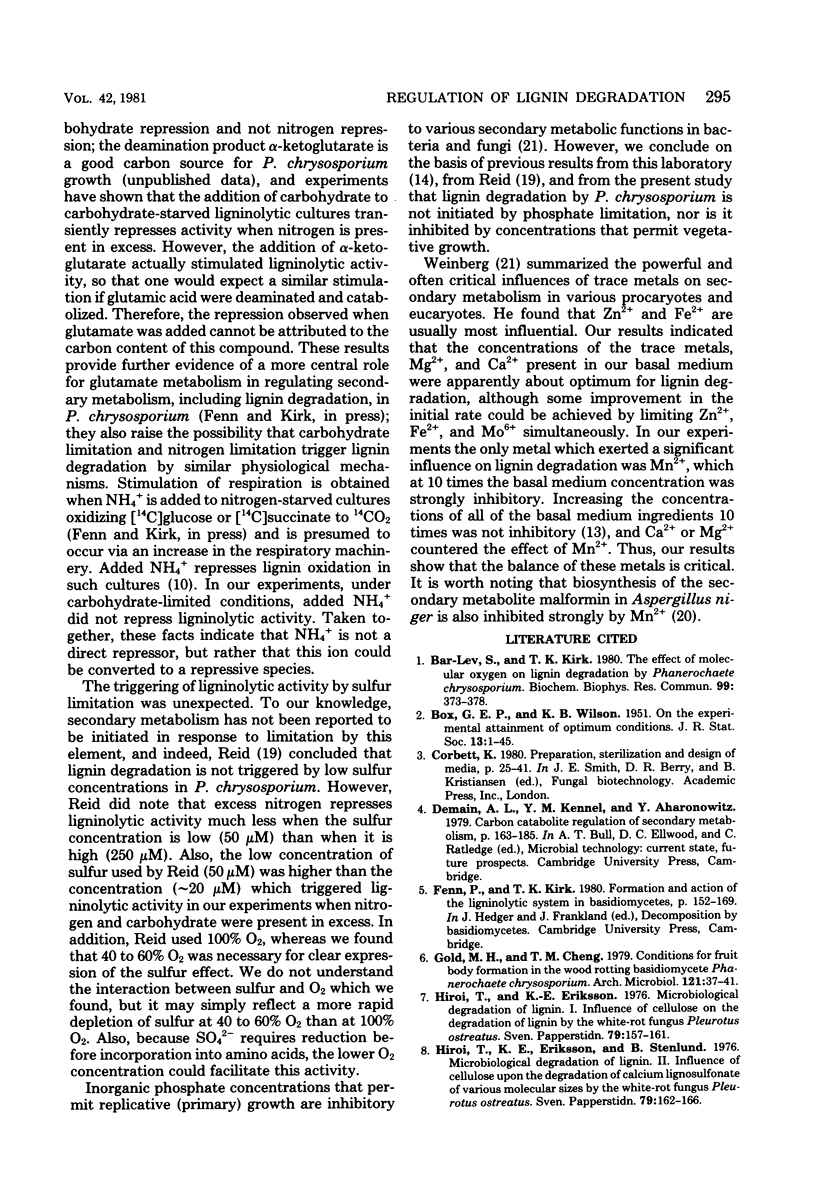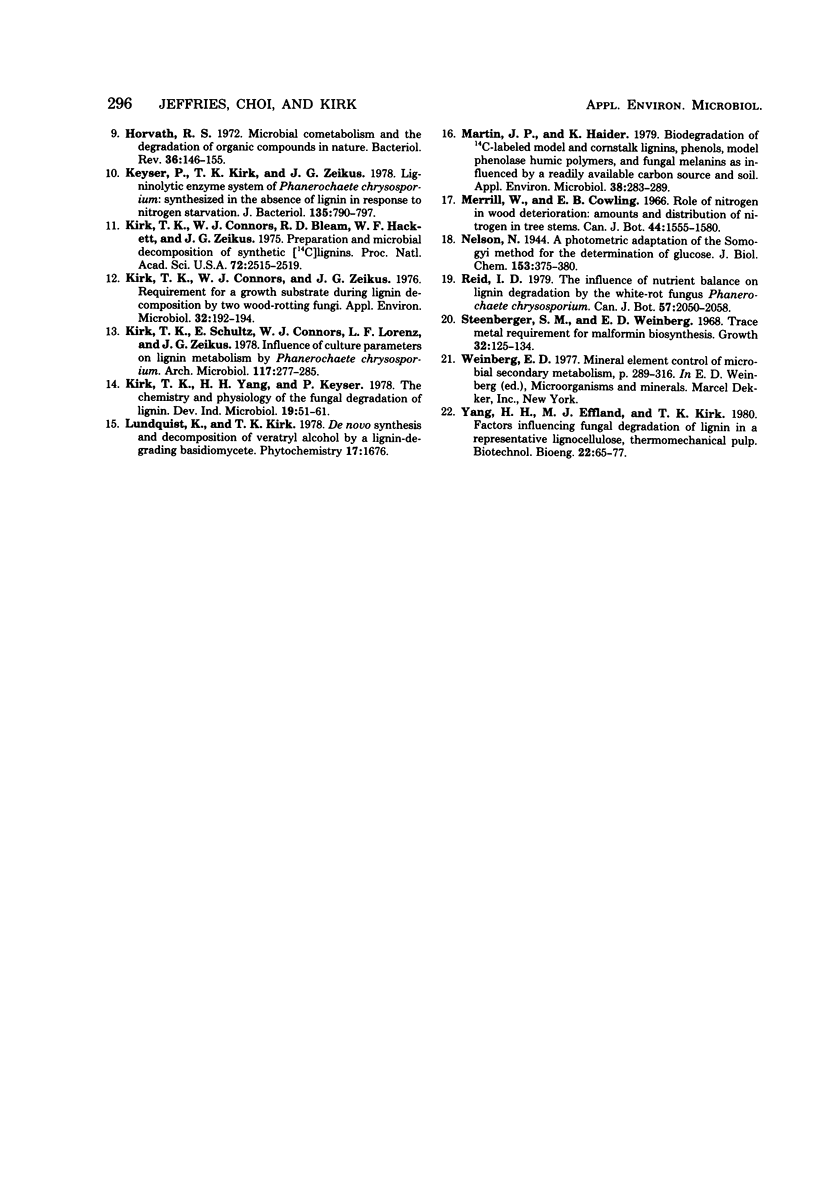Abstract
Previous studies have shown that a lignin-degrading system appears in cultures of the white rot fungus Phanerochaete chrysosporium in response to nitrogen starvation, apparently as part of secondary metabolism. We examined the influence of limiting carbohydrate, sulfur, or phosphorus and the effect of varying the concentrations of four trace metals, Ca2+, and Mg2+. Limitation of carbohydrate or sulfur but not limitation of phosphorus triggered ligninolytic activity. When only carbohydrate was limiting, supplementary carbohydrate caused a transient repression of activity. In carbohydrate-limited cultures, ligninolytic activity appeared when the supplied carbohydrate was depleted, and this activity was associated with a decrease in mycelial dry weight. The amount of lignin degraded depended on the amount of carbohydrate provided, which determined the amount of mycelium produced during primary growth. Carbohydrate-limited cultures synthesized only small amounts of the secondary metabolite veratryl alcohol compared with nitrogen-limited cultures. l-Glutamate sharply repressed ligninolytic activity in carbohydrate-starved cultures, but NH4+ did not. Ligninolytic activity was also triggered in cultures supplied with 37 μM sulfur as the only limiting nutrient. The balance of trace metals, Mg2+, and Ca2+ was important for lignin degradation.
Full text
PDF






Selected References
These references are in PubMed. This may not be the complete list of references from this article.
- Bar-Lev S. S., Kirk T. K. Effects of molecular oxygen on lignin degradation by Phanerochaete chrysosporium. Biochem Biophys Res Commun. 1981 Mar 31;99(2):373–378. doi: 10.1016/0006-291x(81)91755-1. [DOI] [PubMed] [Google Scholar]
- Horvath R. S. Microbial co-metabolism and the degradation of organic compounds in nature. Bacteriol Rev. 1972 Jun;36(2):146–155. doi: 10.1128/br.36.2.146-155.1972. [DOI] [PMC free article] [PubMed] [Google Scholar]
- Keyser P., Kirk T. K., Zeikus J. G. Ligninolytic enzyme system of Phanaerochaete chrysosporium: synthesized in the absence of lignin in response to nitrogen starvation. J Bacteriol. 1978 Sep;135(3):790–797. doi: 10.1128/jb.135.3.790-797.1978. [DOI] [PMC free article] [PubMed] [Google Scholar]
- Kirk T. K., Connors W. J., Bleam R. D., Hackett W. F., Zeikus J. G. Preparation and microbial decomposition of synthetic [14C]ligins. Proc Natl Acad Sci U S A. 1975 Jul;72(7):2515–2519. doi: 10.1073/pnas.72.7.2515. [DOI] [PMC free article] [PubMed] [Google Scholar]
- Kirk T. K., Connors W. J., Zeikus J. G. Requirement for a growth substrate during lignin decomposition by two wood-rotting fungi. Appl Environ Microbiol. 1976 Jul;32(1):192–194. doi: 10.1128/aem.32.1.192-194.1976. [DOI] [PMC free article] [PubMed] [Google Scholar]
- Martin J. P., Haider K. Biodegradation of C-labeled model and cornstalk lignins, phenols, model phenolase humic polymers, and fungal melanins as influenced by a readily available carbon source and soil. Appl Environ Microbiol. 1979 Aug;38(2):283–289. doi: 10.1128/aem.38.2.283-289.1979. [DOI] [PMC free article] [PubMed] [Google Scholar]
- Steenbergen S. T., Weinberg E. D. Trace metal requirements for malformin biosynthesis. Growth. 1968 Jun;32(2):125–134. [PubMed] [Google Scholar]


